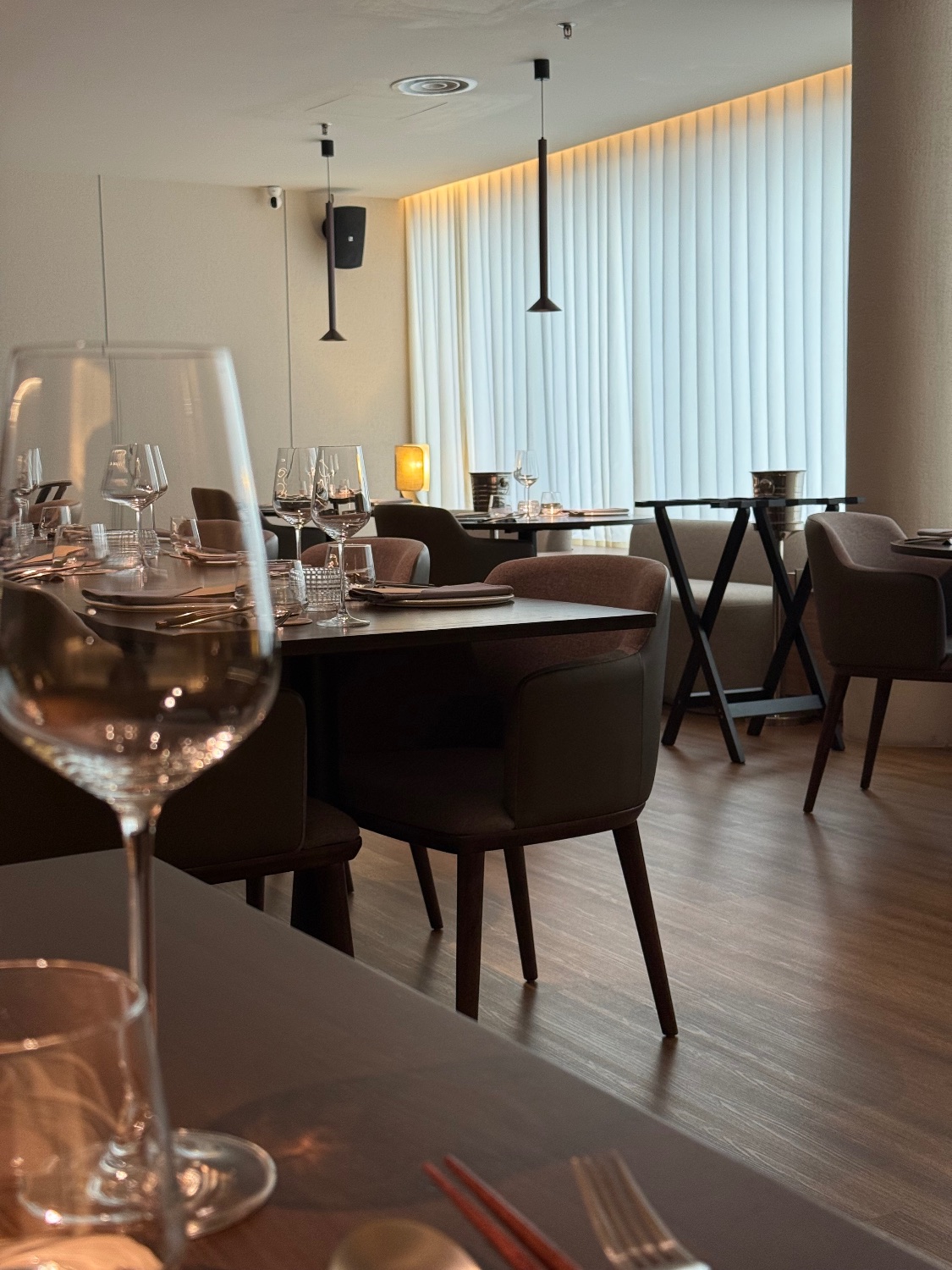
There are a few things I came to learn about Chef Chin after dining at Shu KL: he functions at no less than 100%, never settles, and he loves the women in his life. This is also reflective of the food he serves at the restaurant, which has been calling the rooftop of Menara IMC home for close to two years now. I was there to try their menu—Diaspora Journey—exploring the movement of the Chinese diaspora, from Chin’s ancestral lineage in China all the way here in Malaysia. Oh, and he also ensures that you never leave so unfulfilled that you’d want a second round at the mamak downstairs—his arch enemy.
As I study the menu in front of me, several items jump out in familiarity: lei cha, steamed pomfret in the Teochew style, guava with sour plum powder—I will soon find out that what would be served in front of me is extremely different from the food that I know and am familiar with. This is also another thing I learnt about Chin: he enjoys challenging perspectives. Shu KL is small but comfortable, fancy with the white tablecloths yet cosy with the open kitchen whose chefs keep a watchful eye, wandering over with the next course and ready to explain every detail about how it was prepared. The camaraderie here is genuine, with restaurant manager Shaun sharing details about how a certain dish was made (and then remade, with several past versions constantly being tweaked to perfection). I’m told that what I’m having may not be the same as the next or previous time, as Chin is always looking for ways to make it better.
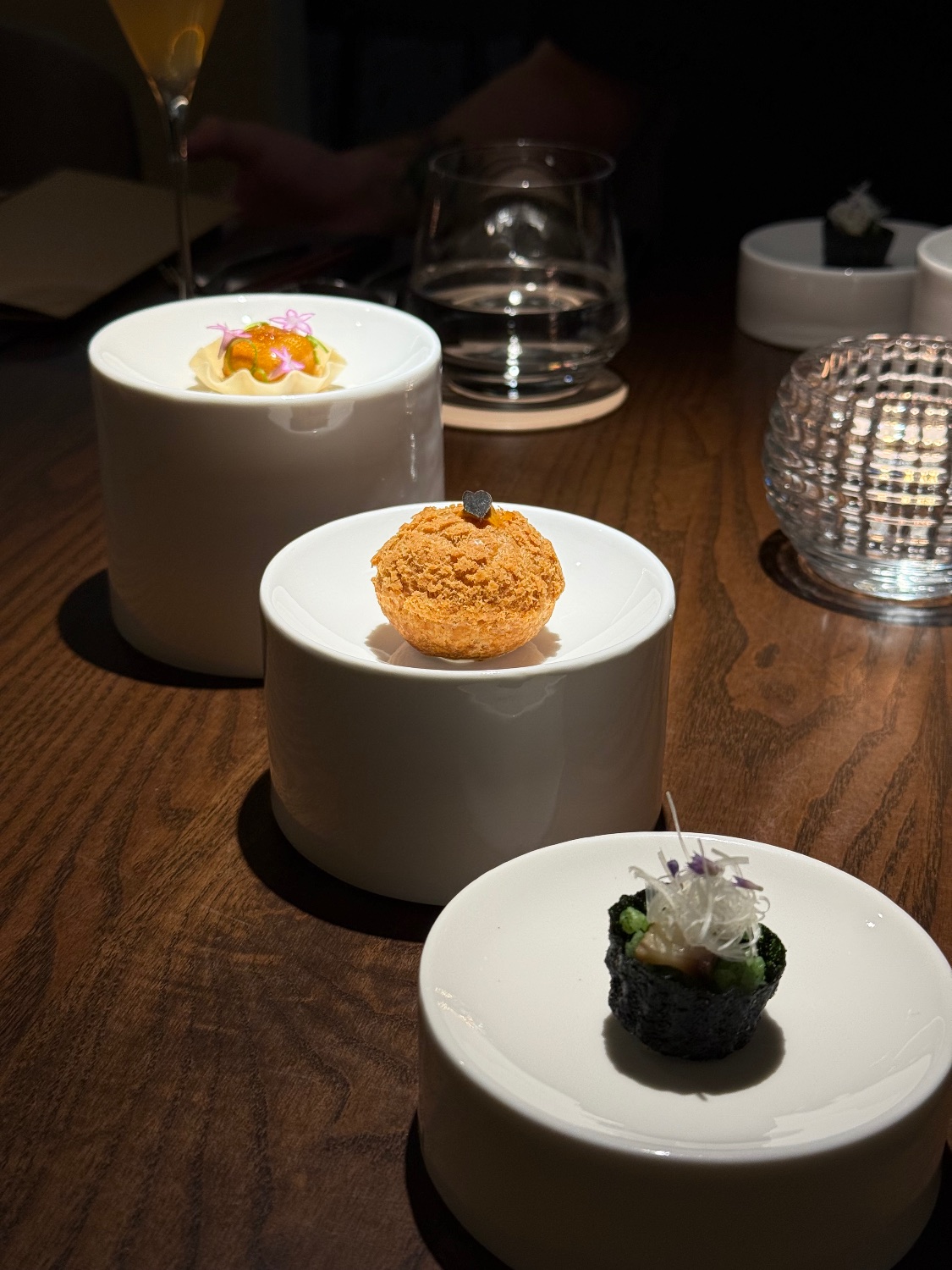
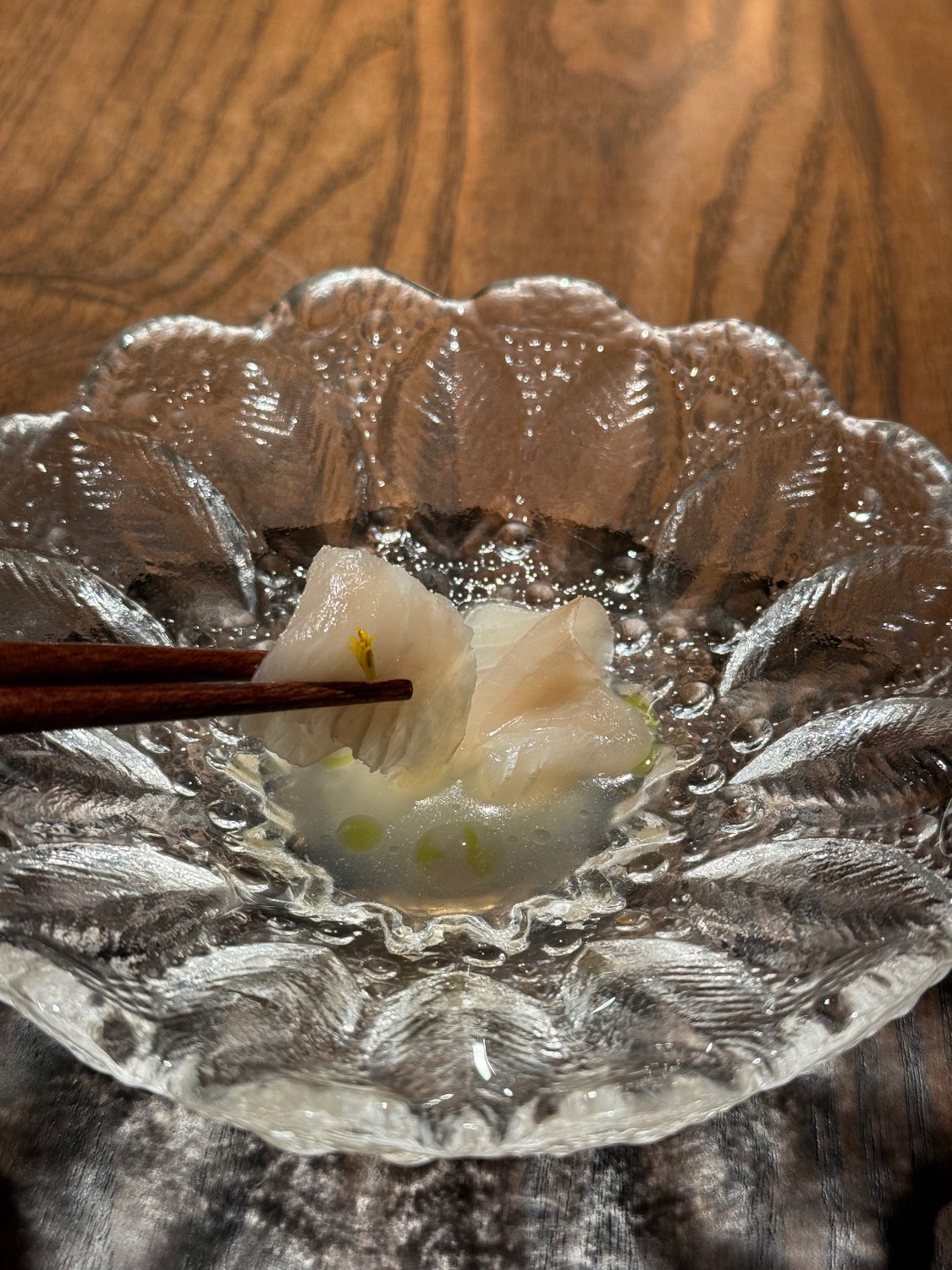
Take for example, the trio of snacks presented to me at the start of our dinner: lei cha, egg fudge with chilli crunch, and braised, roasted peanuts. Straightforward, yet undeniably so. The lei cha—a classic vegetarian dish of Hakka descent—was served in a pai tee. The “egg fudge” was, in fact, a polo bun with housemade “Lao Gan Ma” folded in egg yolk. Bursting with flavour, the “bun” was crunchy, making for quite the fun texture. Meanwhile, the braised peanuts paid homage to the sort of appetiser you’d get before a Chinese banquet meal. I was told that there had been several iterations of this snack, owing to the feedback from former patrons. This version is glossy and glittery, wrapped in a solid gel-like component that had a silky peanut paste enveloped within.
Experimentation in the Shu KL kitchen is key, with Chin’s other team member, Chef Tee, leading the fore. This was evident not just in the dishes but also the non-alcoholic drinks pairing we had to go with the tasting menu. Fun fact: Chin doesn’t drink alcohol, and this non-alcoholic drinks pairing is an attempt to emulate wine flavours minus the buzz—something that I believe more people will be able to appreciate. The “sparkling wine” at the start of the meal was hawthorn syrup infused with soda, tingling and prepping the palate for what’s to come. Later during the meal, I’d also experience more savoury-forward drinks, like the pineapple and tomato combination with a prominent texture and aroma of tomato. As I said—experimentation is key. So are appearances.
It was exciting to see just how Shu KL plans to reinterpret Chinese dishes that we’re so familiar with. The steamed pomfret for our first course was not even steamed. There was pomfret—it was dry aged and served raw, alongside consomme made with the pomfret bones and contained tomato, salted plum, and salted vegetable to emulate the sauces in the traditional Teochew dish. The second course—Rice—did not contain rice. Not in the obvious sense, that is. The “rice” was present in the rice flour bread, served with olive leaves cooked down in pork fat into a very light emulsion. The bread was a delight to eat; the texture was bouncy, and it was flavourful enough on its own. But paired with the olive leaves, it was—for lack of a better word—like crack. The olive leaves were not too overpowering because the texture itself was light, which was key in keeping the dish together.
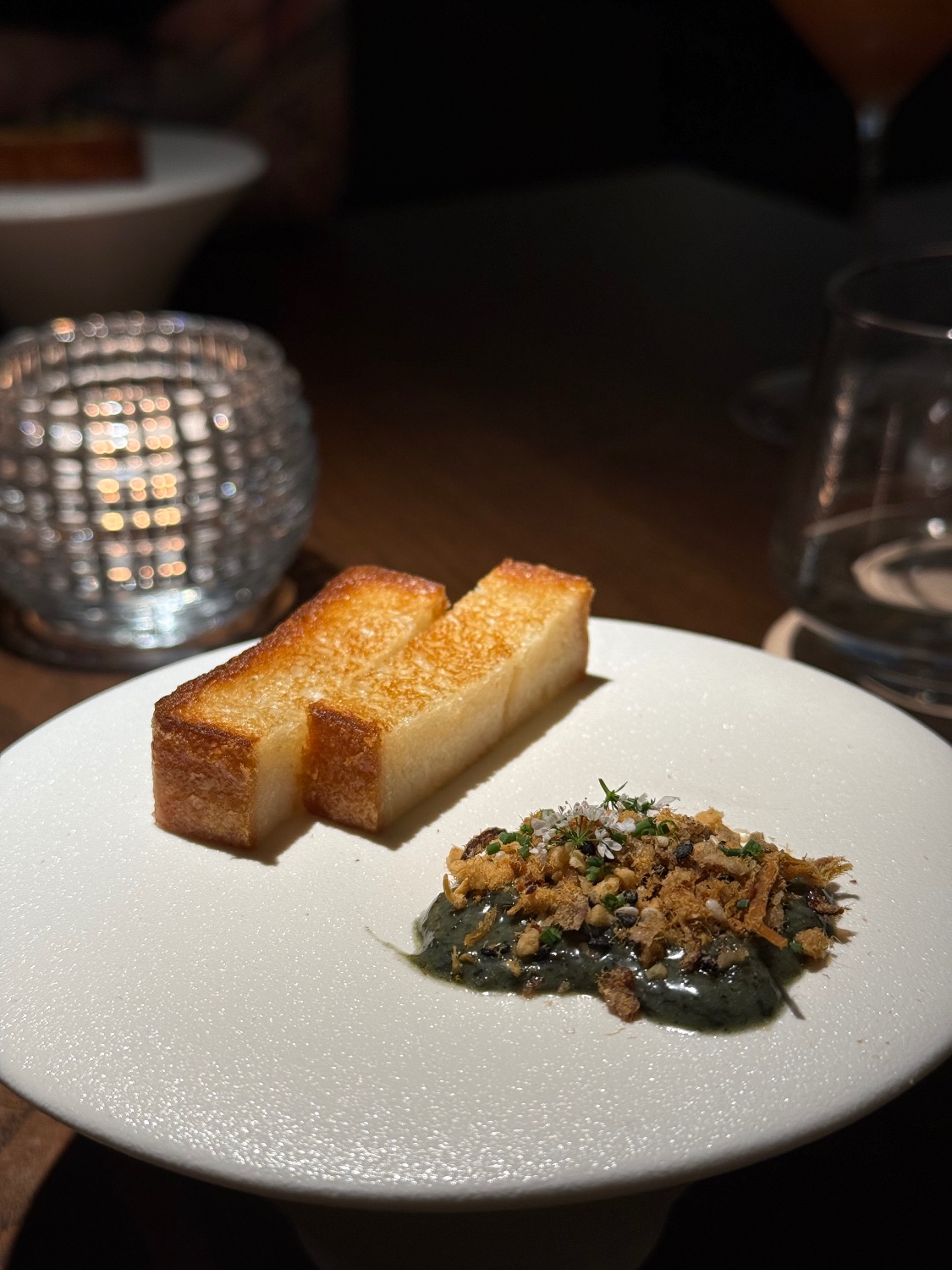
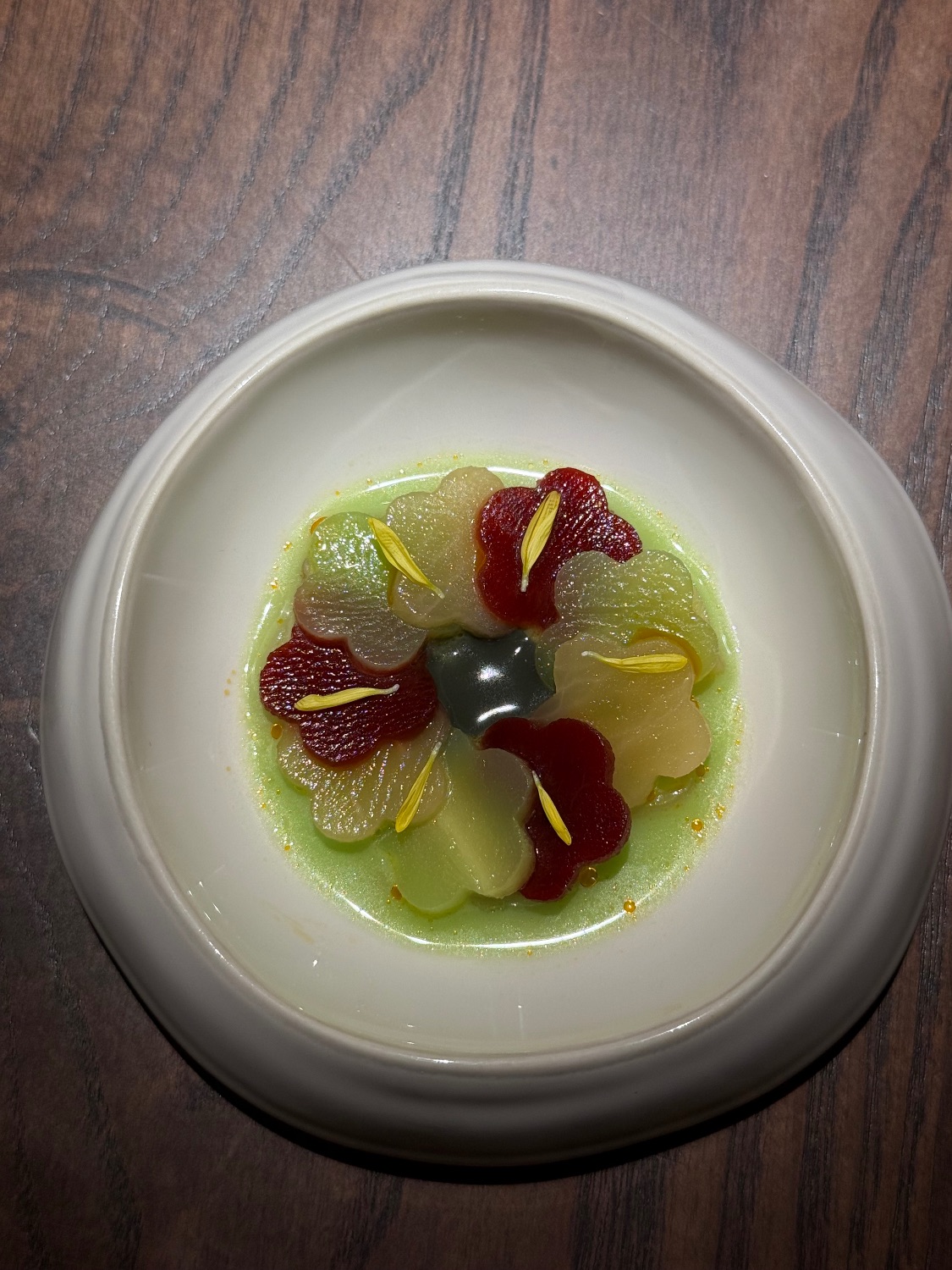
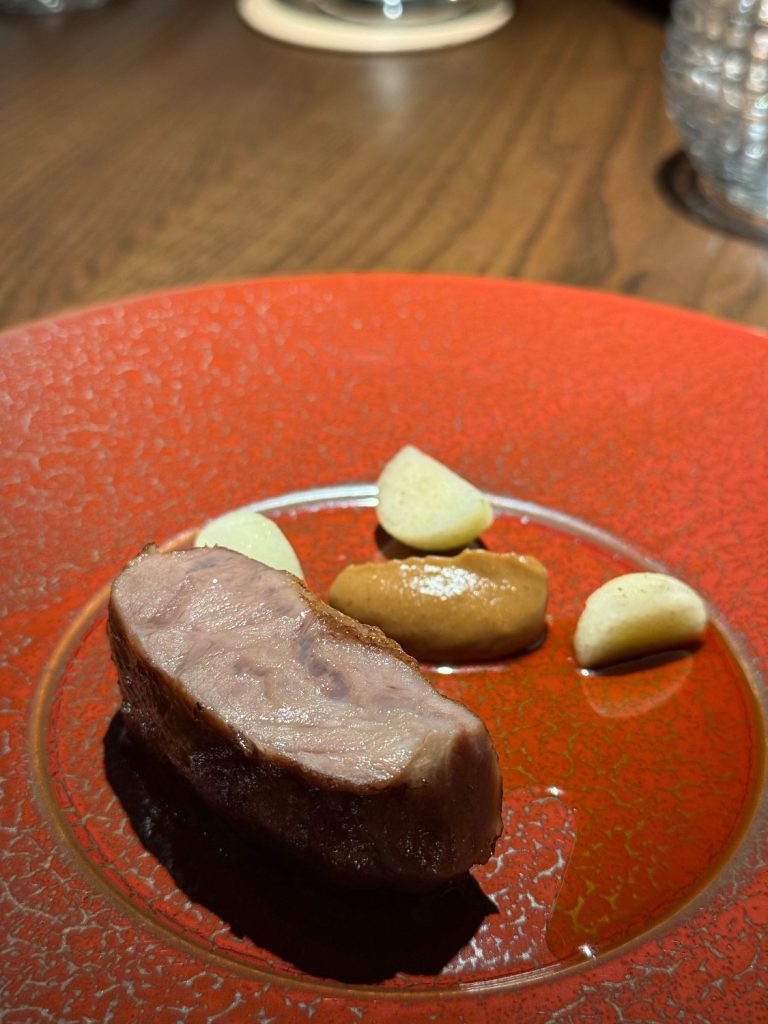
Flavour town was not the only destination here at Shu KL. Texture plays an important stop too. That’s why, for their third course, they wanted something with a crisp-crunchy texture. This was achieved with pickled beetroot surrounding black garlic tofu puree. Underneath this pretty arrangement is jellyfish—the cornerstone of crunchy textures. Finished off with a cucumber dressing and chilli oil, this dish was a medley of pickle flavours balanced out by the cucumber dressing. The underrated star of the show, in my opinion, was the jellyfish, pulling the flavours and textures together.
Back on flavour town for the fourth course, we explore yellow wine, which has been given the driver’s seat in this dish. Aka ebi (Argentine red shrimp), razor clams, and scallops are aged in yellow wine. Assembled on a plate and spritzed with yellow wine, it is then followed by a heart butter sauce—almost bisque-like—that also contains yellow wine. It’s decadent but not cloying; the aged seafood and its freshness complements the butter sauce. We’re told that this is a favourite dish amongst patrons of past, and we can see why.
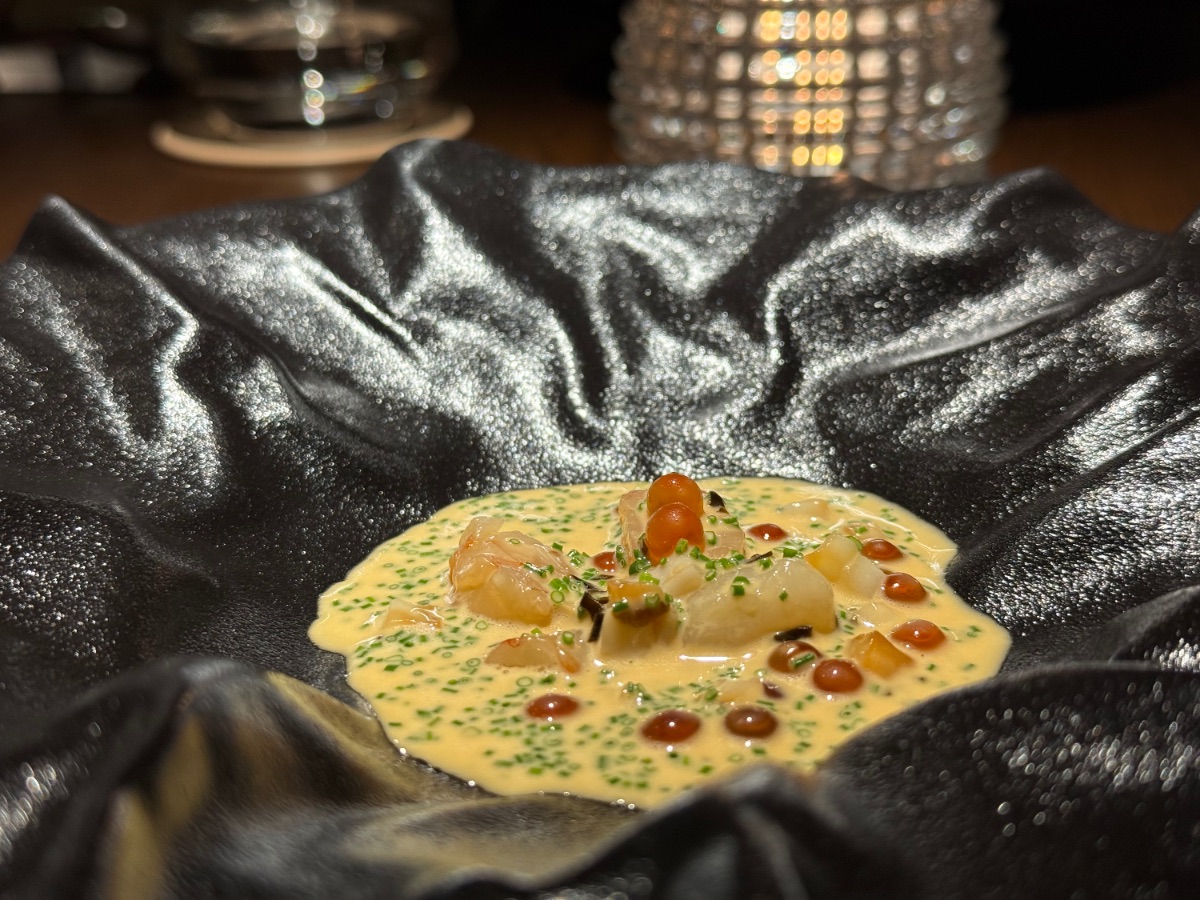
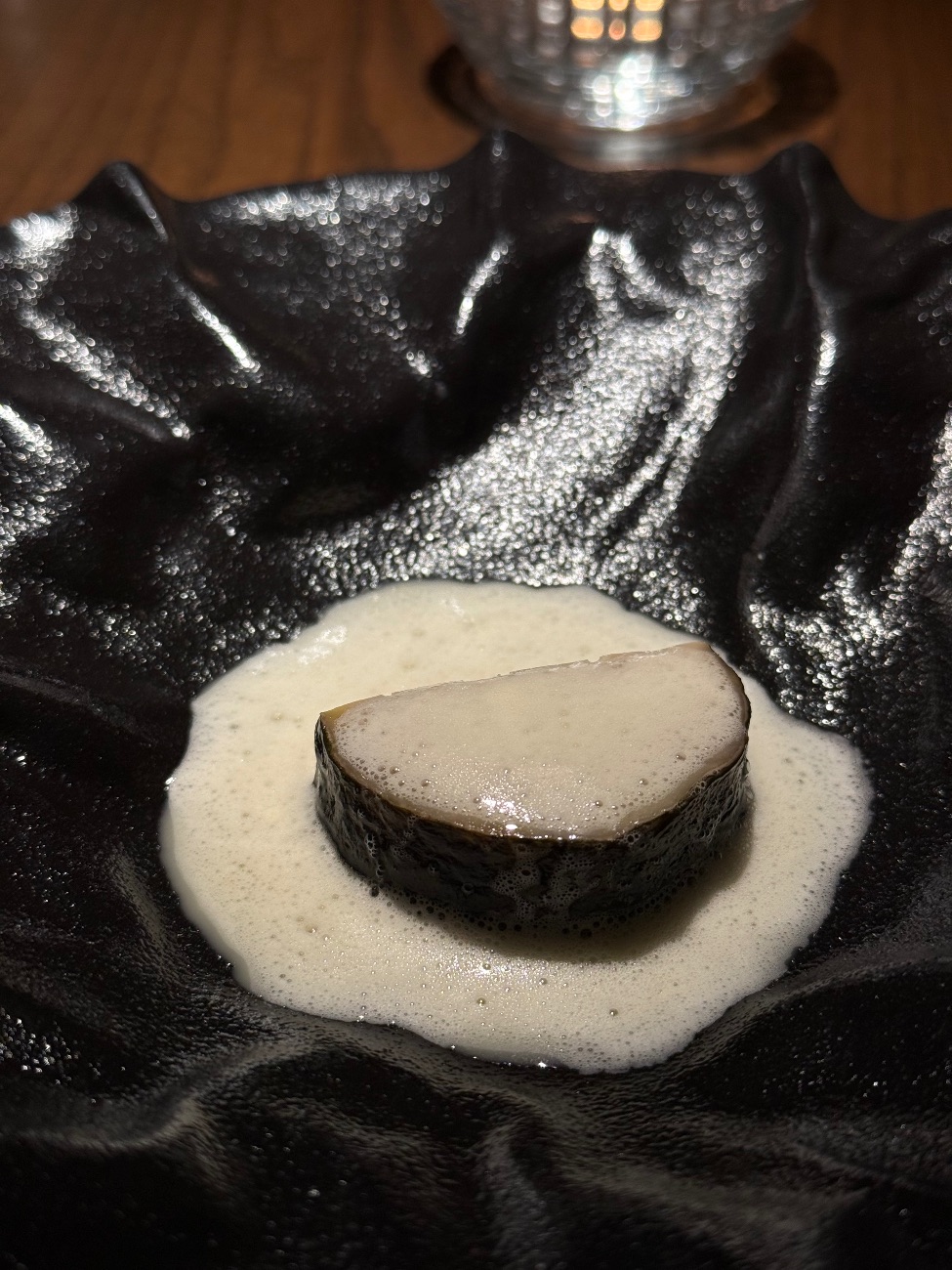
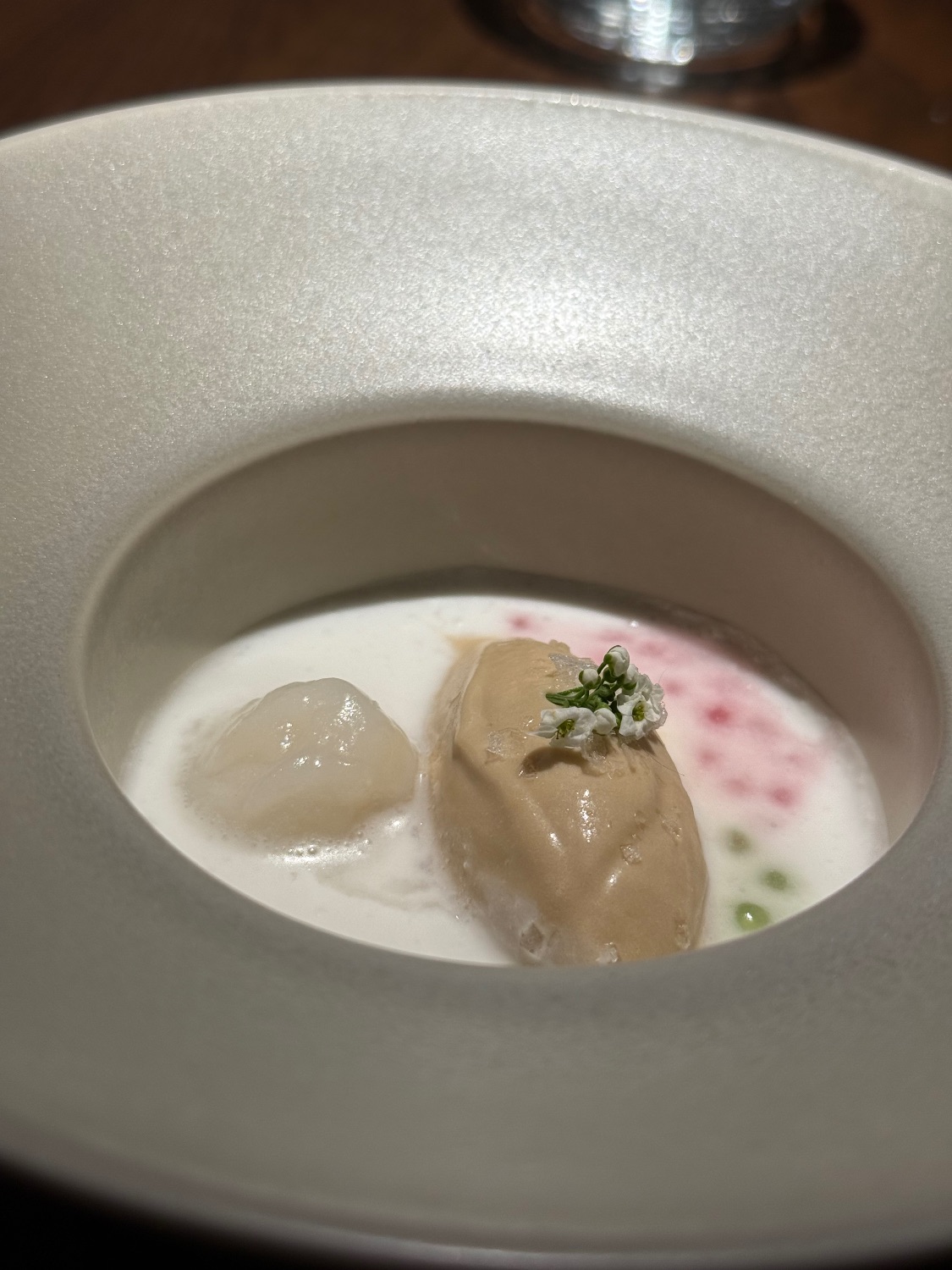
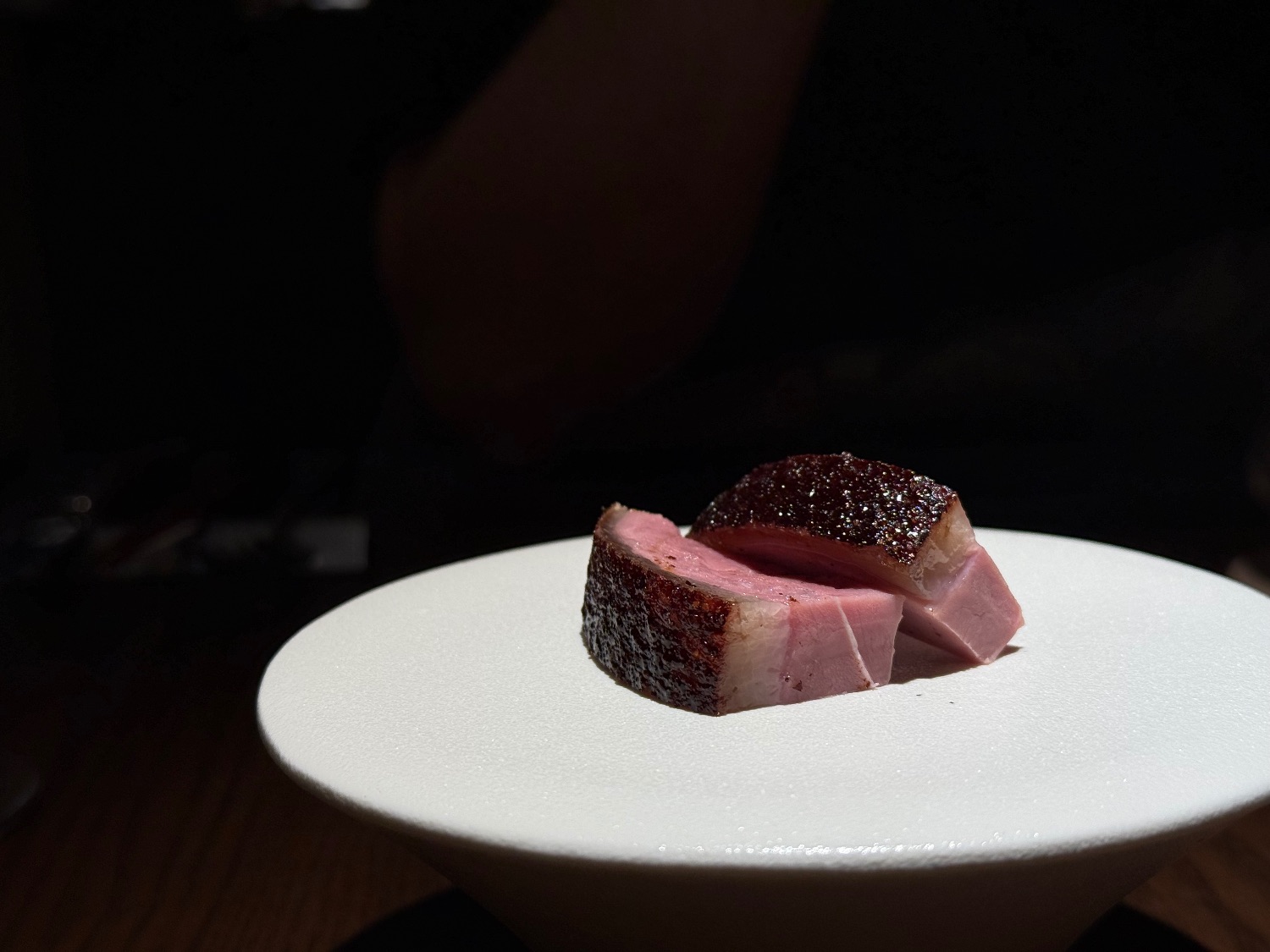
As I mentioned before, Chin does not let his guests leave hungry. We were surprised with several off-menu dishes, like this sturgeon roulade. Here’s another fun fact—Shu KL’s restaurant manager Shaun wears many hats, and one of them includes being a partner at T’LUR Caviar. Sturgeon eggs may be the main product, but the fish itself is often discarded; most chefs don’t really know what to do with the meat that is deemed difficult to handle. Not at Shu KL, though. The roulade was served with a sturgeon broth—smoky and slightly creamy—and had a very bouncy consistency that was a delight to bite into. It was surprisingly light in flavour despite what sturgeon meat is normally known for: strong and musty.
Then, it was time for the main course: Sour Plum, a tribute to Chin’s mother who loves the guava and assam boi combo. However, this is a main dish with pork; not a dessert. The pre-dessert comes later, which is a tribute to another beloved woman in Chin’s life: his fiancee, who loves those cute little rice yogurt drinks. Dragonfruit sorbet is served with rice yogurt, a nice conclusion to a hefty main of pork—and a surprise duck dish—and a prelude to the actual dessert, which takes us back to the play on texture. QQ is such a unique texture that the Western world does not have; for Shu KL’s dessert, they whipped up a medley comprising dumplings, smoked coconut, and coconut cashew ice cream. It almost tastes like the dessert you’d get at the end of a Chinese banquet meal. Rich without being cloying, with lots of bouncy, QQ texture from the mochi.
Address: Level 8, Annexed Block, Menara IMC, 8 Jalan Sultan Ismail, 50250 Kuala Lumpur.
Make a booking here.
READ MORE
Where to Eat, Feast, and Indulge in KL & PJ This Month
Review: 圭 K Kuala Lumpur And Its Quiet Strength in Putting Ingredients First
